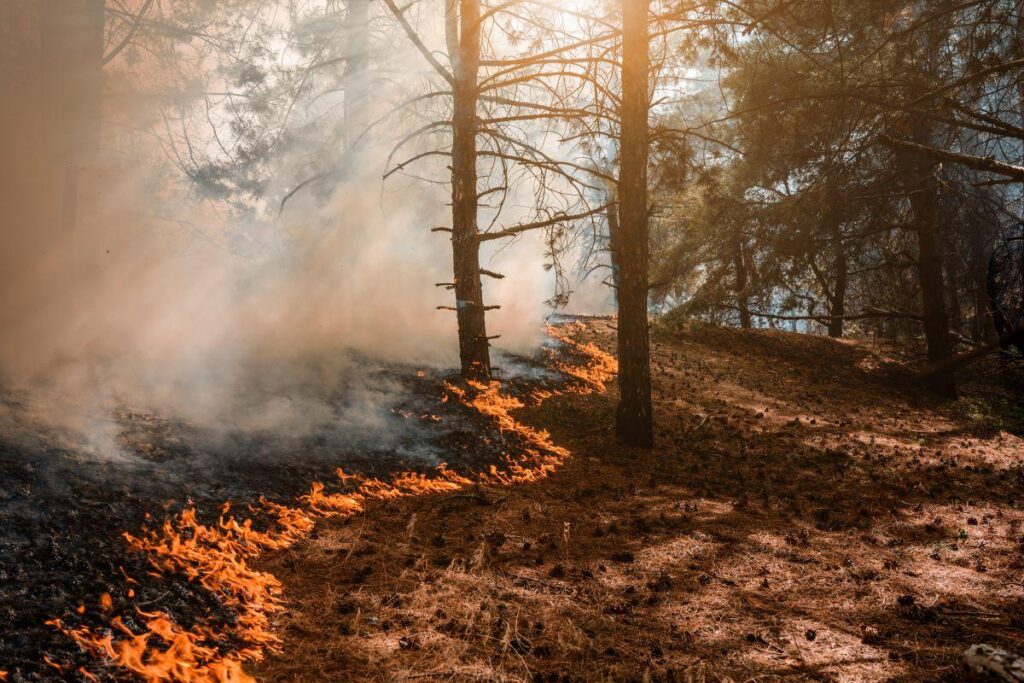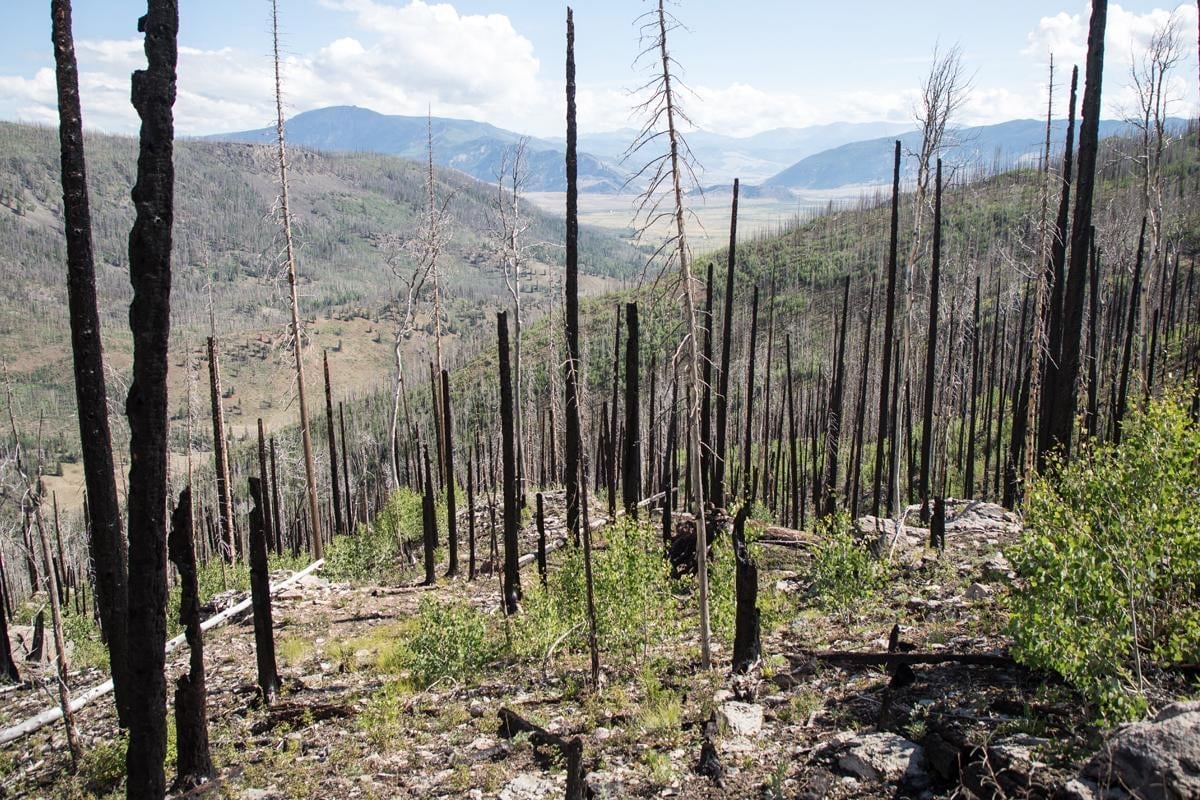For Immediate Release
July 1st, 2020
Risks as Wildfire Prevalence Increases of Long-term Ecological Change
Western Colorado University associate professor of environment and sustainability, Jonathan Coop, PhD., is lead author of a paper, published in the prestigious journal Bioscience, that outlines linkages between increasing wildfire prevalence to forest vegetation change across the Western United States.
“Wildfire-driven forest conversion in Western North American landscapes is the title of the July 2020 paper that incorporates perspectives from over 20 researchers. The paper synthesizes the increasing wildfire impacts scientists report amid climate change, on environments as diverse as the Mexico/Arizona borderlands and the boreal forests of Canada.
”This paper provides new detail on how these processes are unfolding and what the ecological, on-the-ground consequences are,” said Coop, who studies the ecological effects of fire on forests in the southwest U.S. “Under normal circumstances, forest systems have built-in resilience to disturbance – they can take a hit and bounce back. But due to changing climate and increasing wildfire activity, circumstances aren’t normal anymore.”
Compromising Forest Recovery
Co-authors Sean Parks, PhD., research ecologist with the USDA Forest Service, Rocky Mountain Research Station, and Camille Stevens-Rumann, PhD., assistant professor in the Department of Forest and Rangeland Stewardship at Colorado State University made key contributions to the publication about ecological change.
Following high-severity fire, scientists have found forest recovery may increasingly be compromised by lack of tree seed sources, warmer and drier post-fire climate, and more frequent re-burning.
The loss of forest-system resilience means that fire can catalyze major, lasting changes: boreal conifer forests can be converted to deciduous species, and ponderosa pine forests may give way to oak scrub. These changes in forest recovery in turn lead to consequences for wildlife, watersheds, and economies.
‘Assisted migration’ an Option in Some Cases and Places
Researchers said that in places where the most apparent vegetation ecological changes are occurring, such as the southwestern U.S. and in Colorado, land managers are already exploring ways to help forests adapt by planting tree species that are better suited to the new growing and climatic conditions following severe fire.
“In places where changes are not quite so visible, including Montana and Idaho, those conversations are still happening,” Stevens-Rumann said. “In these large landscapes where trees are not coming back, you have to start getting creative.”
Parks, who often uses data collected in protected areas to study wildfire patterns, causes, consequences, and forest recovery said, “Some fires can be good, creating openings for wildlife, helping forests rejuvenate, and reducing fuel loads. How said ever some fires, particularly high-severity wildfires combined with a changing climate, can result in major changes to the types of vegetation. Giving managers information about where and how climate change and wildfires are most likely to affect forest resilience will help them develop strategies to adapt in order to maintain healthy forests.”
Stevens-Rumann agreed. “In the management realm, people have largely continued to operate in the way we’ve done in the past, replacing fire-killed trees with the same species,” she said. “Given the effects of climate change, we need to start being much more creative. Let’s try something different and come up with solutions that allow natural processes to happen and interact with landscapes in different ways.”
Coop said that ecologists and managers are beginning to develop a suite of approaches to increase forest recovery and resilience in an era of accelerating ecological change.

Prescribed Burns to Assist in Positive Ecological Change
One approach he’s partial to is allowing fires to burn under benign or moderate fire weather conditions – as happens in a prescribed burn – which results in a change in the structure of forest stands and patchiness of landscapes. This is also known as managing wildfire for resource objectives.
“Increasingly, we’re realizing you either have the fires you want and can influence or you’re stuck with these giant fires where, like hurricanes, there’s no shaping their path,” said Coop.
Many of the researchers involved in this synthesis have personal experience that drives their passion for forest ecology research.
Prior to becoming a scientist, Stevens-Rumann spent three years on a USDA Forest Service “Hotshot” crew, specializing in fighting fires in remote dangerous terrain. Parks grew up in Colorado and California and acknowledges seeing changes in the forests and landscapes he grew up with.
One of Coop’s first vivid childhood memories was watching the flames of the 1977 La Mesa Fire, which burned more than 15,000 acres of north-central New Mexico pine forests in the Bandelier National Monument and near the Los Alamos National Laboratory. The La Mesa fire was the first in a series of increasingly large and severe fires that since have claimed incredible amounts of forest in the region, culminating with the 140,000-acre Las Conchas fire in 2011. Within the footprint of Las Conchas, less than a quarter of the landscape is still forested.
“Seeing these things unfold over my lifetime, I don’t know if I ever really could have imagined it,” Coop said. “I’ve borne witness to these very dramatic changes unfolding in the one place that I really know best on Earth.”
Contact
Jeremy Simon, director of communications, 970-765-4566
Jonathan Coop, Western associate professor and lead author, 970-943-2565
Environment and Sustainable Development at Western
The School of Environment and Sustainability at Western empowers students to better assist communities to effectively transition to be ecologically resilient. From addressing climate and ecological change, like in the article above, to managing organic farms, collaborating with diverse global communities, and more, students will have the education and support to make real changes in the world. Whether studying environment and sustainability or water studies, or if you choose to obtain a masters in environmental management with one of our many specialized emphasis opportunities, you will be well equipped to cultivate your future and tackle any environmental changes of the twenty-first century.


